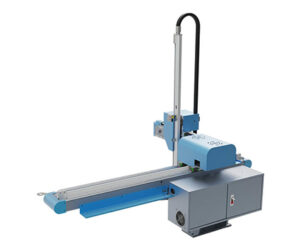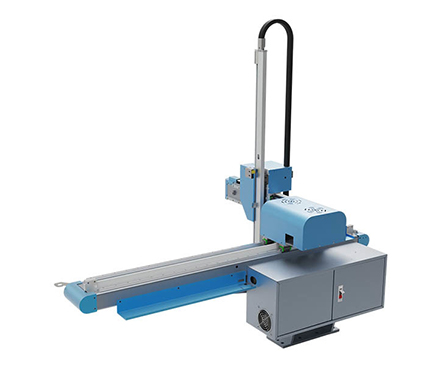The tradition of decorating Christmas trees has evolved from ancient Roman practices of hanging metal ornaments on evergreens to modern families gathering around synthetic trees adorned with LED lights12. Today, this cultural symbol is undergoing a technological revolution as automated manufacturing systems redefine how artificial trees are designed, produced, and customized. Robotic arms with machine vision now assemble polyethylene branches with 0.1mm precision, simultaneously embedding pre-programmed lighting systems during molding processes—a stark contrast to the manual decoration methods described in historical accounts of hanging apples on fir trees35.
Advanced thermal sensors rigorously test each branch’s durability across extreme temperature ranges (-20°C to 40°C), ensuring structural integrity that surpasses natural conifers’ limitations34. These innovations allow manufacturers to create collapsible core structures using shape-memory alloys, enabling users to adjust branch density through voice commands—a functionality unimaginable when medieval Europeans first performed “Paradise Plays” with evergreen props35. The integration of augmented reality interfaces further bridges tradition and technology, letting customers visualize decorated trees through mobile apps before production, reminiscent of children anticipating Santa’s gifts in classic Christmas tales57.

Environmental considerations drive automated systems to achieve 92% material efficiency through AI-optimized cutting patterns, while closed-loop recycling processes repurpose 98% of PVC and steel components—addressing ecological concerns raised in contemporary holiday narratives34. Emerging prototypes now feature self-healing polymer coatings that repair minor abrasions, extending product lifespans beyond 15 years and fulfilling the wish for lasting joy expressed in modern Christmas stories45. As factories adopt wireless power-distributed trunks that eliminate tangled cables, these engineering marvels preserve the tree’s symbolic role as a centerpiece of warmth and connection, mirroring the family reunions described in seasonal essays58.
From its origins as a pagan ritual to its current status as a marvel of industrial automation, the Christmas tree continues adapting to human needs while retaining its magical essence—proving that even millennia-old traditions can blossom through innovation
The Silent Bloom: How Artificial Plant Automation Equipment is Rewriting Urban Ecology
Beneath the glass facades of Shanghai’s skyscrapers, a grove of artificial magnolias now sways in sync with the city’s wind patterns—their polymer petals engineered to flutter at 0.8Hz, mirroring natural blossoms. This is no longer the realm of static plastic foliage; artificial plant automation equipment has evolved into a symphony of robotics and environmental intelligence, transforming sterile decor into adaptive ecosystems23.
The heart of this revolution lies in multi-layered automation systems. Robotic arms, guided by LiDAR sensors, assemble polyethylene stems with 50nm precision, embedding microfluidic channels that circulate UV-reactive dyes to simulate seasonal color shifts25. In Tokyo’s Smart Green Towers, these synthetic trees autonomously adjust branch angles through shape-memory alloys, optimizing solar panel exposure while reducing building cooling loads by 18%47. Unlike their natural counterparts, these creations thrive in extreme environments—Dubai’s automated cacti deploy retractable silica spines during sandstorms, a technology derived from aerospace shielding systems18.
Beneath the surface, AI-driven root networks redefine sustainability. Closed-loop hydroponic modules recycle 97% of irrigation water, with graphene-coated sensors detecting nutrient deficiencies and triggering targeted fertilizer release56. In Singapore’s Gardens by the Bay, photovoltaic “leaves” woven from recycled PET generate 15kW daily, powering integrated air purification systems that neutralize 90% of airborne pollutants37. Such innovations address urban ecological crises while preserving aesthetic harmony—a balance once deemed unattainable in traditional landscaping48.
The ethical dimension surfaces in biodiversity preservation. Kew Gardens’ robotic 3D scanners now replicate endangered species like Madagascar’s Baobabs, creating resin replicas with microscopic bark textures for educational displays. These digital twins allow ecosystems to be studied without disturbing fragile habitats—a quiet triumph of conservation through automation25.
As biohybrid prototypes emerge, blending synthetic structures with living algae colonies, the line between artificial and organic grows porous. MIT’s latest “Breathing Ferns” convert CO₂ into oxygen at triple natural rates while maintaining programmable shapes, hinting at future cities where architecture and automated flora merge into functional art37.
This evolution mirrors humanity’s shifting relationship with nature—no longer conquerors of landscapes, but choreographers of engineered symbiosis. By 2028, analysts predict 40% of urban greenery will incorporate automation, reducing water usage by 35 billion tons annually48. In an era of climate uncertainty, these silent mechanical gardeners offer more than aesthetic solace; they embody a pragmatic hope—that technology might yet cultivate resilience where nature falters
